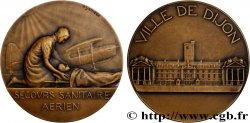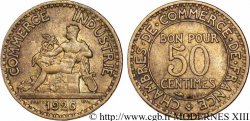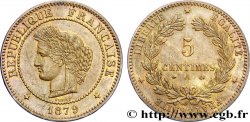E-auction 301-221060 - fme_370786 - III REPUBLIC Médaille du congrès interrégional du gaz des forêts
You must signin and be an approved bidder to bid, LOGIN TO BID. Accounts are subject to approval and the approval process takes place within 48 hours. Do not wait until the day a sale closes to register. Clicking on « bid » constitutes acceptance of the terms of use of cgb.fr private e-auctions.
Bids must be placed in whole Euro amounts only. The sale will start closing at the time stated on the item description; any bids received at the site after the closing time will not be executed. Transmission times may vary and bids could be rejected if you wait until the last second. For further information ckeck the E-auctions F.A.Q.
NO BUYER'S FEE.
NO BUYER'S FEE.
| Estimate : | 180 € |
| Price : | 33 € |
| Maximum bid : | 36 € |
| End of the sale : | 21 January 2019 18:19:00 |
| bidders : | 5 bidders |
Type : Médaille du congrès interrégional du gaz des forêts
Date: 1938
Mint name / Town : 19 - Soursac
Metal : silver plated bronze
Diameter : 41 mm
Orientation dies : 12 h.
Engraver BAUDICHON René (1878-1963)
Weight : 31 g.
Edge : lisse
Coments on the condition:
Superbe et intéressante médaille avec un très bel aspect général
Obverse
Obverse legend : CONGRÉS INTERRÉGIONAL DU GAZ DES FORETS / 1938.
Obverse description : Sous bois avec un camion et une machine à produire du gaz des forêts.
Reverse
Reverse legend : BARRAGE ET USINE DE L’AIGLE.
Reverse description : Vue du barrage de l’Aigle.
Commentary
Médaille signée RENE BAUDICHON / monogramme ER au revers.
Datée de 1938, cette date est antérieure à la construction du barrage du revers (?).
Le gazogène, inventé au XIXe siècle, est un appareil permettant de produire un gaz combustible à partir de matières solides et combustibles tels que bois (gaz de bois), charbon de bois, coke ou anthracite, permettant d'alimenter des moteurs spéciaux, dits à gaz pauvres, des moteurs à explosion classiques ou bien des chaudières. Ce système, sous la forme mise au point par Georges Imbert, fut utilisé couramment en France, pour pallier l'absence de carburant automobile pendant la Seconde Guerre mondiale. C'est en effet un appareil simple à fabriquer, ne demandant que des matériaux faciles à se procurer.
Le barrage de l’Aigle, dit « le barrage de la Résistance », fut construit pendant la Seconde Guerre mondiale. Le barrage de l'Aigle est situé en France, en partie (rive droite) sur la commune de Soursac en Corrèze, en région Aquitaine-Limousin-Poitou-Charentes et l'autre partie (rive gauche) sur la commune de Chalvignac dans le Cantal, en région Auvergne-Rhône-Alpes. Le concepteur de cet ouvrage est André Coyne, associé à un prisonnier évadé, André Decelle, lui-même ingénieur aux Ponts et chaussées et qui devint directeur général d’EDF. Deux autres personnes ont dirigé la construction du barrage : les architectes Brochet et Chabbert. Les travaux ont été retardés pour ne pas céder l’ouvrage à l’ennemi (il devait être terminé en 1942).
L’Aigle (nom qu’on lui a donné d’après une légende qui disait que des aigles nichaient sur le rocher surplombant le barrage), a été inauguré le 15 octobre 1945. Le groupe 4 a été mis en service ce jour même, puis le groupe 3 en 1947, ensuite le groupe 2 en 1950 et le groupe 1 en 1956. L’Aigle a été suréquipé d’un groupe déporté à 100 m en aval du barrage, appelé groupe 6, mis en service en 1982.
René Baudichon, né à Tours le 24 mars 1878 et mort à Paris en 1963, est un sculpteur et médailleur français. Petit neveu de Mgr Joseph Baudichon, il étudia à l'école des beaux-arts de Tours, puis en 1897 à l'école des beaux-arts de Paris. Il fut l'élève de Louis-Ernest Barrias, de François-Léon Sicard et de Frédéric-Charles Victor de Vernon. Baudichon est admis au Salon des artistes français en 1903 et y obtient successivement une médaille de bronze en 1904 pour une plaque commémorative exécutée sur une commande de la chambre de commerce de Blois, puis une médaille d'argent en 1914 et une médaille d'or en 1921 et fut classé hors concours en 1921.
Il était membre de la Société artistique et littéraire Le Cornet et signa « Boby » un certain nombre de caricatures entre 1903 et 1923..
Datée de 1938, cette date est antérieure à la construction du barrage du revers (?).
Le gazogène, inventé au XIXe siècle, est un appareil permettant de produire un gaz combustible à partir de matières solides et combustibles tels que bois (gaz de bois), charbon de bois, coke ou anthracite, permettant d'alimenter des moteurs spéciaux, dits à gaz pauvres, des moteurs à explosion classiques ou bien des chaudières. Ce système, sous la forme mise au point par Georges Imbert, fut utilisé couramment en France, pour pallier l'absence de carburant automobile pendant la Seconde Guerre mondiale. C'est en effet un appareil simple à fabriquer, ne demandant que des matériaux faciles à se procurer.
Le barrage de l’Aigle, dit « le barrage de la Résistance », fut construit pendant la Seconde Guerre mondiale. Le barrage de l'Aigle est situé en France, en partie (rive droite) sur la commune de Soursac en Corrèze, en région Aquitaine-Limousin-Poitou-Charentes et l'autre partie (rive gauche) sur la commune de Chalvignac dans le Cantal, en région Auvergne-Rhône-Alpes. Le concepteur de cet ouvrage est André Coyne, associé à un prisonnier évadé, André Decelle, lui-même ingénieur aux Ponts et chaussées et qui devint directeur général d’EDF. Deux autres personnes ont dirigé la construction du barrage : les architectes Brochet et Chabbert. Les travaux ont été retardés pour ne pas céder l’ouvrage à l’ennemi (il devait être terminé en 1942).
L’Aigle (nom qu’on lui a donné d’après une légende qui disait que des aigles nichaient sur le rocher surplombant le barrage), a été inauguré le 15 octobre 1945. Le groupe 4 a été mis en service ce jour même, puis le groupe 3 en 1947, ensuite le groupe 2 en 1950 et le groupe 1 en 1956. L’Aigle a été suréquipé d’un groupe déporté à 100 m en aval du barrage, appelé groupe 6, mis en service en 1982.
René Baudichon, né à Tours le 24 mars 1878 et mort à Paris en 1963, est un sculpteur et médailleur français. Petit neveu de Mgr Joseph Baudichon, il étudia à l'école des beaux-arts de Tours, puis en 1897 à l'école des beaux-arts de Paris. Il fut l'élève de Louis-Ernest Barrias, de François-Léon Sicard et de Frédéric-Charles Victor de Vernon. Baudichon est admis au Salon des artistes français en 1903 et y obtient successivement une médaille de bronze en 1904 pour une plaque commémorative exécutée sur une commande de la chambre de commerce de Blois, puis une médaille d'argent en 1914 et une médaille d'or en 1921 et fut classé hors concours en 1921.
Il était membre de la Société artistique et littéraire Le Cornet et signa « Boby » un certain nombre de caricatures entre 1903 et 1923..








 Report a mistake
Report a mistake Print the page
Print the page Share my selection
Share my selection Ask a question
Ask a question Consign / sell
Consign / sell
 Full data
Full data



